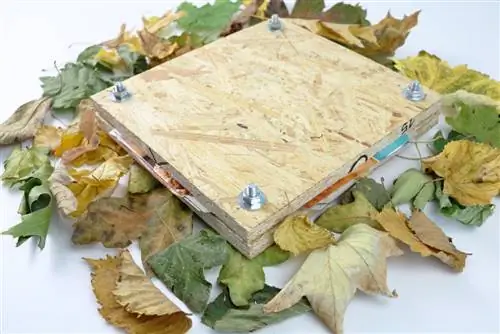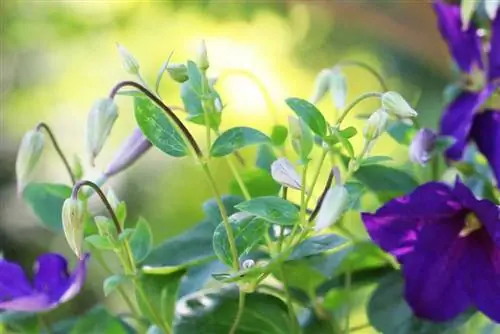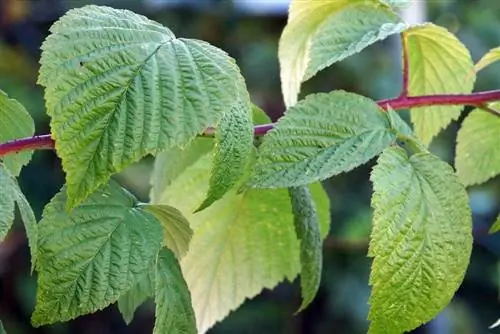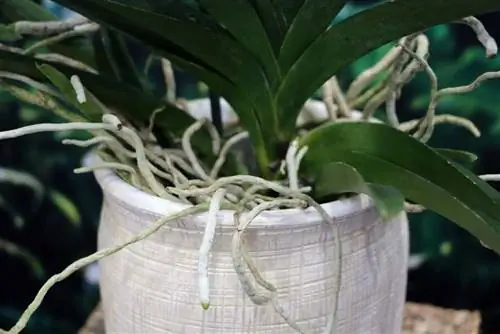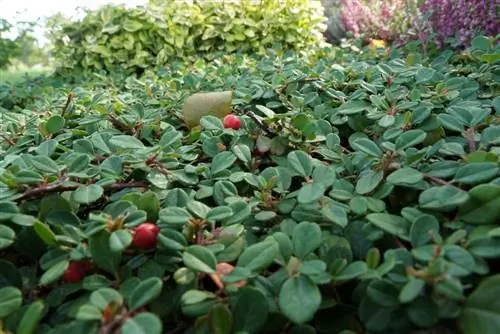- Author admin [email protected].
- Public 2023-12-17 03:39.
- Last modified 2025-01-24 12:45.
Colorful leaves in autumn, leaves of rare plants and leaves of fragrant flower buds are beautiful memories when pressed. You can use them to create individual handicrafts. They are also sought-after decorative objects for unusual table decorations or, in the case of rose petals, an addition to bath water or a fragrance dispenser in the wardrobe. To ensure that the consistency is retained as much as possible, it is advisable to dry the leaves as quickly as possible. There are different methods for doing this.
General
Petals and leaves of trees and shrubs are preserved by depriving them of oxygen and water. For durability, it is important to completely remove moisture. Otherwise the leaves will mold later. To dry the leaves, absorbent material in the form of kitchen towels or newspaper is used in the drying process. For greeting cards or the creation of a herbarium, the leaves are additionally pressed, sorted according to plant families, glued and labeled.
Dry the leaves the classic way
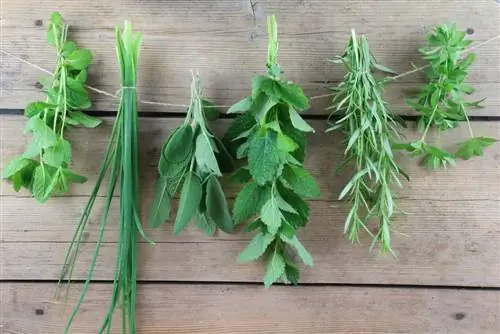
To do this, place a few layers of kitchen paper under your collection of leaves. Spread the leaves evenly next to each other on the kitchen paper. Cover the leaves with several layers of paper towels. The top layer consists of a wooden board or a glass pane. Weigh the whole thing down with thick books, weights or similar. The pressure ensures that the sheets do not curl. Check the paper towels the next day. If it is damp, replace the layers with new kitchen paper. Repeat the procedure until the kitchen paper is no longer damp. It takes around seven days for the leaves to dry. Fleshy leaves take longer to dry.
Tip:
If you blow-dry the sheets between changing the paper towels, you can shorten the drying time!
Drying leaves using technology
The leaves of flowers and plants dry faster in the microwave. The difficulty is finding the right amount so that the leaves become dry and don't burn. Place a sheet of kitchen paper under and over the sheet to absorb moisture. Place an additional cup of cold water in the cooking space. The liquid serves to absorb excess energy. Set the timer for 10 seconds and check the consistency of the leaves when the time is up. Repeat the process until the leaves are dry.
By the way:
Leaves dried in the microwave may curl.
The ironing method
A hot iron removes excess water from the leaves.
- Dab wet leaves dry
- Place leaves between wax paper
- put an old towel over it
- depending on the thickness of the sheet, iron this side for several minutes
- turn the sheet when the first page is dry
- repeat the procedure
Tip:
Turn off the steam function of the iron beforehand! The wax from the wax paper is deposited on the sheet. That's why not only the leaf but also its original color is preserved. A tea towel is not suitable for covering because the fabric keeps the heat away from the sheet. The ironing method smoothes the leaves perfectly.
How to keep leaves soft
Leaves can be preserved with glycerin. With this method they turn brown, but remain very supple. The water contained in the leaves is replaced by glycerin during preservation. Find a bowl that can hold the leaves. The liquid mixture is made from two parts water and one part glycerin. The leaves in the bowl must be covered with the liquid. You may be able to weigh down the leaves with a porcelain plate. The process takes around four days. When combined with a picture frame, the leaves preserved in this way create a beautiful and durable wall picture.
Drying with home remedies
S alt can be found in everything. It absorbs moisture and is therefore a suitable desiccant. Dry s alt is particularly suitable for quickly drying plant leaves and flowers. It is available at hardware stores. Leaves and s alt are placed in a can in alternating layers. The top layer is s alt. Now close the can tightly. It takes around four days for the leaves to dry. This method also works with table s alt, cat litter or washing powder.
Pressing leaves
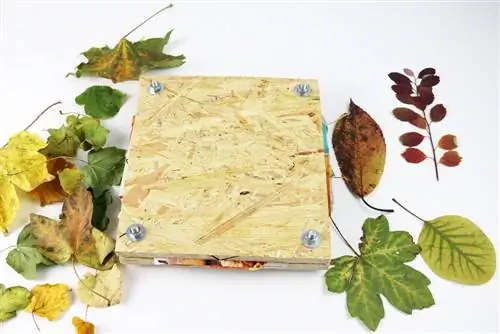
To press the dried leaves, you need to put a weight on them. Anything heavy enough to put pressure on the leaves is suitable for this purpose. To press the leaves, place them on kitchen towels on a flat surface and cover them with kitchen towels. Weigh the leaves down with a wooden board or a glass plate and place the weights on top for pressing. A plant press works on the same principle. The sheets are placed between the individual layers of the press and clamped tightly.
Tip:
You can also press the leaves into a thick book or several newspapers. To prevent the pages from becoming dirty, we recommend a layer of paper between the sheet and the page.
Do not put sheets of paper in each page to press, but leave several pages free so that enough pressure is applied to the sheets. Change the protective paper after a few days. It absorbs moisture and could cause the book pages to curl. Dry leaves are very sensitive. They can break quickly. Therefore, remove the pressed leaves from the surface very carefully.
Frequently asked questions
Which method works fastest?
The quickest way is in the microwave or oven.
How long does it take to press leaves?
It depends on the thickness. The first results can be seen after just three days.
How are rose petals dried?
If you want them to keep their natural shape, then air dry them. A permeable material such as gauze or a sieve is recommended as a surface.
How do the petals keep their color?
If you want to do it quickly, then s alt or silicate gel will preserve the color. When drying slowly, the color is best retained if the leaves are dried in a dark place.
Things to know about drying leaves in brief
Traditional press with books
Leaves that you want to preserve the color are best dried using the traditional method: you place them sheet by sheet between kitchen paper or blotting paper and then in a thick, but not good, book. The safest thing to do afterwards is to stack a few heavy books on top. After about 2 weeks the leaves should be dry enough. The book pages may curl if they get moisture from the leaves. Therefore, good books should not be used. You can also use two strong pieces of cardboard instead of book pages and then place books or something heavy on them.
Dry leaves with dry s alt
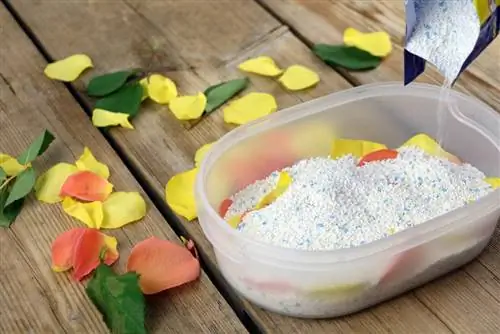
Another option is with dry s alt. This also preserves the leaf color. You put the leaves in a can, pour in a layer of s alt and place the leaf or leaves in there (side by side, not on top of each other): then add another layer of s alt on top. You can repeat this layer by layer, as long as the leaves are all surrounded by s alt. The vessel is closed and then we have to wait. The s alt changes color. At first it is dark. The more moisture is absorbed from the leaves, the brighter it becomes. This way you can tell when the leaves are dry, but it takes a week or two. The s alt can be used again, but must be dried in the oven.
Tip:
If you spray the dried leaves with hairspray, they will shine beautifully.
Air drying tea leaves
Leaves that are to be used for tea are spread out on a layer of kitchen paper and allowed to air dry. This way they retain their aroma and most of the ingredients.

